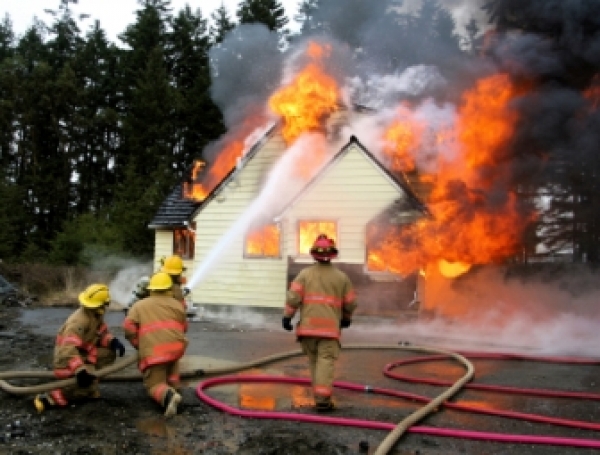In the year 2010-2011 there were over 44,000 household fires in the UK. A household fire can be one of the most destructive events you can experience but the damage caused isn’t limited to the fire itself; considerable damage can occur after the flames have gone. Here we will assess the real extent of the destruction that a fire can cause and the cost of it.

The Fire – Firstly, the blaze itself causes a substantial amount of damage; burnt fabrics, charred wood, melted plastics, destroyed possessions, all of which are expensive and time-consuming to replace. You’ll also have to empty your house of all the remains, and carefully assess what has been annihilated or damaged beyond repair.
Water Damage – In order to extinguish the fire your home will be drenched through by firemen’s hoses. Although this prevents further fire destruction, it causes problems in its own right. All of the water can cause substantial amounts of further damage, both to soft furnishings and to any electrical devices. However, it could also affect your house’s wiring. As such, after a fire it is essential to have your house’s internal electrics checked to ensure they’re still safe. If they’ve been badly damaged then you may have to have the expensive, but very necessary, process of re-wiring done.
Mould Damage – If you don’t drain the water out of your house quickly, you run the risk of serious damage from mould. Rugs, carpets, soft furnishings, and wallpaper are all at risk from mould and mildew. It is essential that you air the house and all fabrics out as soon as possible in order to minimise this risk. However, the walls themselves could also be at risk, as drywall and other porous building materials can retain water. As a result, you will probably need your home to be inspected for mould, and undergo any necessary removal or prevention procedures, before any restoration can take place.
Smoke Damage – After your house has been dried out it will still retain the smell of smoke as well as the black marks and soot it leaves. Soot is oily and will easily stain curtains, carpets, and all other household fabrics. The best option is to hire a professional restorer, or at the very least a special heavy duty vacuum. The smell of smoke however, is likely to remain even after the fabrics have been cleaned and will need to be thoroughly deodorised. Again, professional cleaners are recommended as normal home deodorising sprays and cleaning products are unlikely to do more than temporarily cover up the smell. Also, professional restorers are able to use a process called ‘thermal fogging’ which will penetrate the walls of your home (just as the smoke did) and is the only way to guarantee effective removal of the smell.
Having fully comprehensive home insurance means that, if you do suffer from a household fire, these very expensive procedures should be covered. Buildings insurance will include the cost of rebuilding your home meaning that, however serious the fire is, you’re protected against every eventuality.
Written by Kat Kreatzer, an experienced blogger working in the insurance industry for many years, focusing on home insurance
The Real Cost Of A Household Fire

